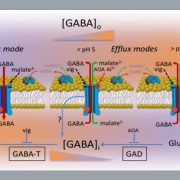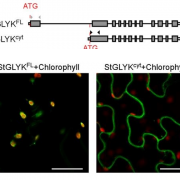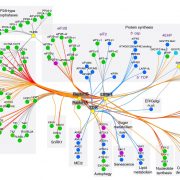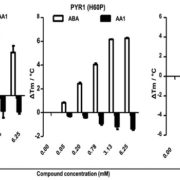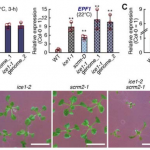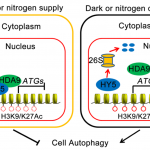Damage-gated immune responses to microbes (Cell)
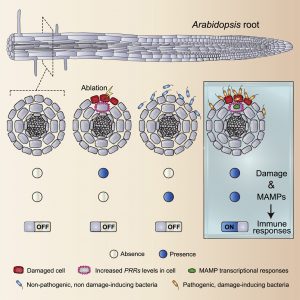 Plants are surrounded by diverse microbes and must avoid mounting an immune response against innocuous microbes, while properly activating defense against invading pathogens. As the initial plant-microbe contacts happen in a limited number of cells, understanding spatially-resolved plant immune responses at the single cell level is important. Zhou et al. used highly sensitive markers to spatially map plant immune activation at cellular resolution in the root. They observed that plant immune responses to flg22, a microbe-derived immune elicitor (microbe-associated molecular pattern; MAMP), are confined to the root cap and transition/elongation zone. Interestingly, flg22 responsiveness could be gained in cells neighboring cells artificially damaged by laser ablation. The authors genetically showed that the flg22 receptor FLS2 is responsible for this damage-gated immune activation. Using double reporter lines of FLS2 and defense marker genes, the authors demonstrated that cellular damage induces neighboring cells to confer flg22 responsiveness in a strictly cell-autonomous manner. These observations were confirmed using actual root-bacteria interaction models. When cells are laser-ablated, non-pathogenic bacteria could trigger immunity in neighboring cells, which are otherwise blind to these bacteria. Moreover, cellular damage caused by root pathogens unlocked the ability of neighboring cells to mount immune responses against the pathogens. Various MAMP receptors were shown to be induced when neighboring cells are damaged. This study deepened our understanding of how plant roots deal with heterogeneous and microbe-rich environments. (Summary by Tatsuya Nobori) Cell 10.1016/j.cell.2020.01.013
Plants are surrounded by diverse microbes and must avoid mounting an immune response against innocuous microbes, while properly activating defense against invading pathogens. As the initial plant-microbe contacts happen in a limited number of cells, understanding spatially-resolved plant immune responses at the single cell level is important. Zhou et al. used highly sensitive markers to spatially map plant immune activation at cellular resolution in the root. They observed that plant immune responses to flg22, a microbe-derived immune elicitor (microbe-associated molecular pattern; MAMP), are confined to the root cap and transition/elongation zone. Interestingly, flg22 responsiveness could be gained in cells neighboring cells artificially damaged by laser ablation. The authors genetically showed that the flg22 receptor FLS2 is responsible for this damage-gated immune activation. Using double reporter lines of FLS2 and defense marker genes, the authors demonstrated that cellular damage induces neighboring cells to confer flg22 responsiveness in a strictly cell-autonomous manner. These observations were confirmed using actual root-bacteria interaction models. When cells are laser-ablated, non-pathogenic bacteria could trigger immunity in neighboring cells, which are otherwise blind to these bacteria. Moreover, cellular damage caused by root pathogens unlocked the ability of neighboring cells to mount immune responses against the pathogens. Various MAMP receptors were shown to be induced when neighboring cells are damaged. This study deepened our understanding of how plant roots deal with heterogeneous and microbe-rich environments. (Summary by Tatsuya Nobori) Cell 10.1016/j.cell.2020.01.013
[altmetric doi=”10.1016/j.cell.2020.01.013″ details=”right” float=”right”]


